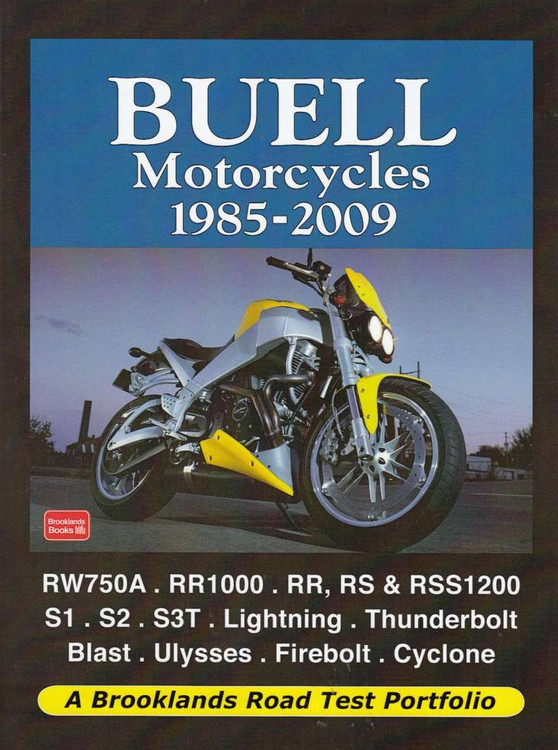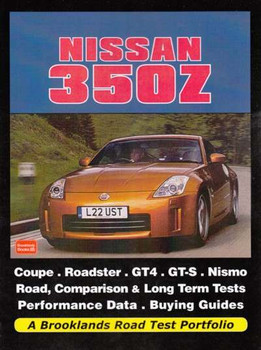Description
ISBN 9781855208940, book published by Brooklands Books
This portfolio reports on Buell production from 1985 up to the closing of the company in 2009. Articles, drawn from three continents, trace all models over this period. Included are road and comparison tests, riding impressions, new model introductions, and updates plus full specifications and performance data.
Reported on are the RW750A, RR1000, RR, RS and RSS1200, S2, S3T and S1. Also the Lightning, Thunderbolt, Blast, Ulysses, Firebolt and Cyclone.
A total of 272 fully illustrated pages, a Brooklands Road Test book printed in Australia.
About Buell Motorcycle
The first Buell motorcycle, the RW750, was built in 1983 purely for competing in the AMA Formula 1 motorcycle road racing championship. At that time, Erik Buell was a top contending privateer motorcycle racer. After completion of the first two RW750 racing machines, one of which was sold to another racing team, the Formula 1 series was cancelled. Buell then turned his focus towards racing-inspired, street-going machines using engines manufactured by Harley. In 1993, Harley-Davidson Incorporated joined in partnership with Buell Motor Company as a 49% stake holding minority partner and the company formed was renamed Buell Motorcycle Company. In 1998, Harley purchased majority control of Buell, and it has been a subsidiary since that time. Since then, Buell has used modified Harley-Davidson Sportster engines to power its motorcycles.
Most Buell motorcycles use four-stroke air-cooled V-twin engines, originally built from XR1000 Sportster engines. After these were depleted, a basic 1200 Sportster engine was used. In 1995, the engines were upgraded with Buell engineered high performance parts and further upgraded in 1998. In October 2009, Harley-Davidson Inc. announced the end of production of Buell Motorcycles to enable them to focus more on the Harley-Davidson brand. Erik Buell later founded Erik Buell Racing to provide support for 1125 and XB privateer race efforts.
On the technical side Buell XB models incorporated the industry’s first ever Zero Torsional Load (ZTL) perimeter floating front disc brake system, a patented inside-out wheel/brake design that puts the brake disc on the outer edge of the wheel, rather than at the hub. This is said to let the suspension function better, improving control and traction, through reducing unsprung weight on the front wheel. Other industry innovations introduced by Buell in the XB lineup were the fuel in frame technology, and the dual use of the swingarm as an oil tank. Also, all Buell models feature a dual-purpose muffler mounted below the engine which helps keep mass centralized and maximizes torque through the use of a computer-controlled valve to switch between two exhaust paths as necessary.
Buell designs focus on providing good handling, comfortable riding, easy maintenance, and street-friendly real-world performance. Buell motorcycles are engineered with an emphasis on what they call the Trilogy of Tech: mass centralization, low unsprung weight, and frame rigidity. Buell engines are designed to be street-friendly both in fuel efficiency and power. They are also simple and easy to maintain. Buell two-cylinder engines utilize computer controlled ducted forced air cooling (no radiator or liquid coolant, just a variable speed fan that only activates as required), two valves per cylinder, a single throttle body, zero maintenance hydraulic valve actuation, and zero maintenance gear-driven cams. Erik Buell brought flair and innovation to both his racing and street-going machines and these talents will be sadly missed by motorcycle enthusiasts.
Additional Information
Condition Sync Code: |
1000 |
ISBN: |
9781855208940 |
Publisher's Code: |
A-BL1BRP |
Number of Pages: |
270 |
Bound: |
Soft Cover |
Illustrations: |
black & white |
Sync Category Code: |
261186 |



















